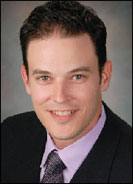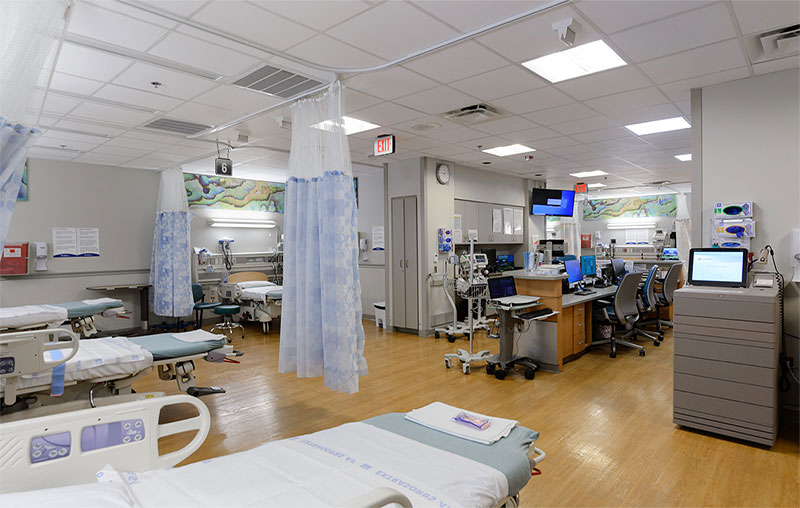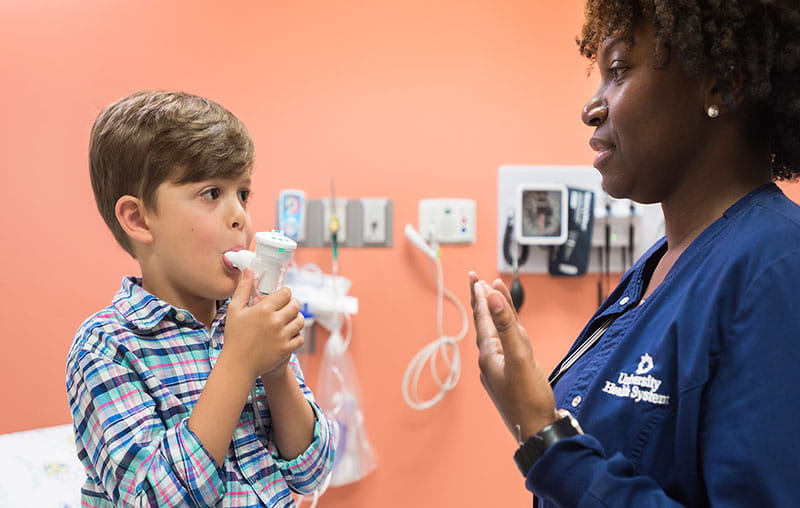What Are Craniofacial Differences?
Craniofacial differences describe anomalies in the skull or facial structure.
When babies are born, their skulls are soft and consist of plates of bone separated by sutures. These open spaces between the plates of bone allow the baby’s brain to grow. Eventually, the sutures will fuse together.
If the sutures close abnormally or too soon, there won’t be enough room for the brain to expand. This can cause pressure in the brain and abnormal skull shape, resulting in craniofacial differences like craniosynostosis.
Craniofacial differences are anomalies in the bone structure and soft tissues of the head and/or face. They may be congenital - present at the time of birth - or acquired through an illness or traumatic injury.
Some of the most common craniofacial differences are cleft lip, cleft palate and craniosynostosis. The University Health Cleft & Craniofacial Center provides comprehensive care for infants and children with craniofacial differences.
Causes of Craniofacial Differences
Craniofacial differences may be caused by genetic factors, environmental influences or a combination of the two.
Genetic Factors
The exact cause of craniofacial differences is not always known, but genetics can be a factor in some conditions. If a condition is genetic, it can be passed from parent to child.
These conditions may be genetic:
- Craniosynostosis
- Cleft lip and cleft palate
- Apert syndrome
- Goldenhar syndrome
- Noonan syndrome
Environmental Influences
Genetic factors, when combined with environmental influences, can contribute to craniofacial differences, according to this study. These are known as gene-environment interactions (GxE).
Environmental factors include the pregnant mother’s exposure to alcohol, toxins, foods or certain medications that could impact the fetus.
Types of Craniofacial Differences
Cleft Lip and Cleft Palate
Cleft lip and cleft palate form when the soft tissue and bone don’t close during fetal development. They are considered orofacial anomalies because they affect the mouth and face. Orofacial clefts “affect approximately 1–1.5 per 1,000 live births worldwide,” according to one study, and require complex medical treatment.
Babies may be born with a cleft lip, cleft palate or both. These differences look like splits in the upper lip or roof of the mouth.
Children born with cleft lip and/or cleft palate require multiple treatments throughout their childhood and into adolescence. University Health provides comprehensive cleft lip and cleft palate care throughout your child’s treatment journey.
Our multispecialty team includes a:
- Pediatric neurosurgeon
- Pediatric maxillofacial surgeon
- Facial plastic and reconstructive surgeon
- Audiologist
- Speech language pathologist
- Pediatric ENT
- Child Life specialist
- Social worker
- Dentist
- Orthodontist
- Nurse coordinator
Craniosynostosis
Craniosynostosis occurs when the bone plates of the skull fuse too early. About one in every 2,500 babies has craniosynostosis in the United States, according to the Centers for Disease Control and Prevention.
Craniosynostosis results in a misshapen head. Early diagnosis is key to getting surgery at the proper time. Dr. Izabela Tarasiewicz, University Health pediatric neurosurgeon, treats four types of craniosynostosis:
- Sagittal
- Coronal
- Metopic
- Lambdoidal
Craniosynostosis treatments may be minimally invasive or open surgery, depending on your child’s unique condition and age.
When treated early, many children with craniosynostosis go on to meet cognitive milestones and live healthy, full lives.
Other Craniofacial Conditions
- Cri-du-chat syndrome
- Goldenhar syndrome
- Hemifacial microsomia
- Mandibulofacial dysostosis
- Microtia
- Noonan syndrome
- Pierre Robin sequence
- Plagiocephaly
- Skeletal jaw abnormalities
- Stickler syndrome
- Velocardiofacial syndrome (VCFS) / 22q11 deletion syndrome
- Velopharyngeal insufficiency (VPI) / including non-cleft VPI
Impact of Craniofacial Differences
Physical Challenges
Craniofacial differences can cause additional physical challenges in babies and children. They may encounter various challenges depending on which condition they have.
For example, children with cleft lip and/or cleft palate may have:
- Feeding difficulties
- Speech and language challenges
- Hearing problems
- Dental challenges
- Frequent sore throat
- Tonsil and adenoid problems
Children with Apert syndrome may have:
- Fusion of the fingers
- Fusion of the toes or misshapen feet
- Challenges with walking and balancing
- Curvature of the lower back (swayback)
Psychosocial Effects
Many children born with craniofacial differences go on to lead full, healthy lives after treatment. However, they may have issues with self-esteem if they view themselves as different from their peers or if they are bullied for these differences.
There are many resources for people with craniofacial differences and their families, including support groups, summer camps and retreats.
- The Children's Craniofacial Association (CCA) offers online support groups for caregivers, siblings and adults with craniofacial differences.
- FACES: The National Craniofacial Association hosts a co-ed summer camp in Georgia for kids with facial differences ages 7 to 17.
The CCA also published helpful tip sheets about self-esteem and self-image, including:
Awareness and Treatment for Craniofacial Differences
The University Health Cleft & Craniofacial Center team provides comprehensive care for infants and children with craniofacial differences. We are approved as a cross-specialty team by the American Cleft Palate Craniofacial Association. This means your child gets complete care from a team of experts including surgeons, dentists, social workers and speech therapists.





